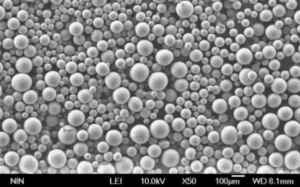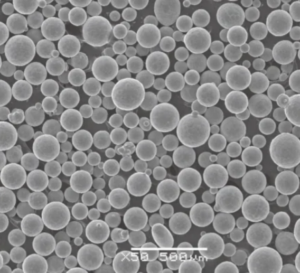概要 耐火金属粉末
極限状態に耐える材料といえば、耐火性金属は周期表の縁の下の力持ちである。これらの金属は、航空宇宙から工業製造に至るまで、無数の高温用途で使用されている。しかし、耐火性金属粉末とは一体何なのだろうか?
耐火性金属粉末は、非常に高い融点を持ち、耐摩耗性、耐腐食性、耐変形性に優れた、細かく分割された金属の粒子である。最も一般的な耐火金属には、タングステン、モリブデン、タンタル、ニオブ、レニウムなどがあります。これらの粉末は、ジェットエンジンや原子炉、さらには宇宙開発など、過酷な条件下で性能を発揮する必要のある部品の製造に使用されています。
耐火性金属粉末の重要性はいくら強調してもしすぎることはない。そのユニークな特性により、他の材料では失敗してしまうような環境でも使用することができます。あなたがエンジニアであれ、科学者であれ、あるいは単に先端材料に強い関心を持つ人であれ、これらの粉末の特性、用途、様々な種類を理解することは極めて重要です。
この記事では、耐火性金属粉末の世界を深く掘り下げ、その組成から用途まで、さらにはさまざまな種類の詳細な比較までご紹介します。一緒にこの技術的な旅に出よう。
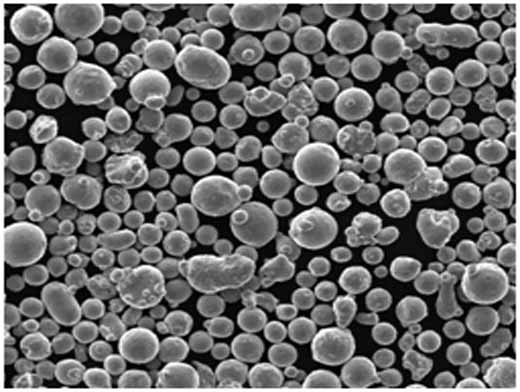
耐火金属粉末の種類と組成
耐火性金属粉末には様々な種類があり、それぞれ独自の組成と特性を持っています。以下では、最も一般的に使用される耐火性金属粉末のいくつかを詳しくご紹介します:
| 金属粉 | 構成 | 融点 | 密度 | 主な特徴 |
|---|---|---|---|---|
| タングステン(W) | 純タングステン | 3,422°C | 19.25 g/cm³ | 最高融点、優れた高温強度、導電性。 |
| モリブデン (Mo) | 純モリブデン | 2,623°C | 10.22 g/cm³ | 優れた熱伝導性、耐食性、低熱膨張性。 |
| タンタル (Ta) | 純タンタル | 3,017°C | 16.69 g/cm³ | 高い延性、優れた耐食性、生体適合性。 |
| ニオブ | 純ニオブ | 2,468°C | 8.57 g/cm³ | 高融点、優れた耐食性、超伝導特性。 |
| レニウム | 純レニウム | 3,185°C | 21.02 g/cm³ | 非常に高い融点、優れた耐摩耗性、触媒特性。 |
| クロム(Cr) | 純クロム | 1,907°C | 7.19 g/cm³ | 高硬度、耐食性、反射特性。 |
| ハフニウム(Hf) | 純ハフニウム | 2,233°C | 13.31 g/cm³ | 優れた耐食性、高融点、中性子吸収特性。 |
| ジルコニウム(Zr) | 純ジルコニウム | 1,855°C | 6.52 g/cm³ | 高い耐食性、低い中性子捕獲断面積、優れた延性。 |
| イリジウム(Ir) | 純イリジウム | 2,446°C | 22.56 g/cm³ | 極めて密度が高く、耐食性に優れ、融点が高い。 |
| オスミウム | 純オスミウム | 3,033°C | 22.59 g/cm³ | 高密度、高硬度、優れた耐摩耗性。 |
の特徴 耐火金属粉末
では、耐火性金属粉末は何が特別なのか?それは特性にある。これらの粉末はユニークなだけでなく、高応力用途に不可欠な特性を誇っています。では、その特徴を整理してみよう:
- 高融点:耐火性金属の最も顕著な特徴は、その信じられないほど高い融点であり、しばしば2,000℃を超える。例えば、タングステンの融点は3,422℃と、あらゆる金属の中で最も高い。この特性により、これらの金属は、ロケットのノズルや炉の部品など、極端な熱が要因となる用途に欠かせないものとなっている。
- 高密度:タングステンやレニウムのような耐火性金属は、その高い密度で知られています。そのため、徹甲弾のように大量の運動エネルギーを吸収できる材料を必要とする用途に最適です。
- 耐食性:多くの耐火性金属、特にタンタルとニオブは、過酷な化学環境においても優れた耐食性を示します。そのため、化学処理装置や医療用インプラントに最適です。
- 耐摩耗性:クロムやオスミウムのような耐火性金属の高い硬度は、優れた耐摩耗性をもたらし、切削工具、耐摩耗コーティング、高耐久性部品に適している。
- 熱伝導率と電気伝導率:高融点にもかかわらず、多くの耐火性金属は優れた熱伝導性と電気伝導性を持っている。これは特にタングステンやモリブデンに当てはまり、電気接点や発熱体に有用です。
- 延性と機械加工性:耐火性金属の中にはその硬さで知られるものもあるが、タンタルのように非常に延性が高いものもある。この延性は、電子工学や航空宇宙工学などの用途において極めて重要である。
耐火金属粉末の用途
そのユニークな特性を考えれば、耐火性金属粉が幅広い用途に使用されているのは当然のことです。ここでは、これらの材料が一般的に使用されている場所を見てみよう:
| 申し込み | 使用耐火金属粉 | 目的 |
|---|---|---|
| 航空宇宙部品 | タングステン、モリブデン | ロケットエンジン、ヒートシールド、タービンブレードにおける高温耐性。 |
| 原子炉 | ジルコニウム、ハフニウム | 原子炉の中性子吸収、耐食性、構造部品。 |
| 医療用インプラント | タンタル、ニオブ | インプラントと補綴物における生体適合性と耐食性。 |
| エレクトロニクス | タングステン、タンタル | 導電性と安定性により、コンデンサ、抵抗器、その他の電子部品に使用される。 |
| 切削工具 | タングステン、クロム | 切削、掘削、採掘工具における耐摩耗性と耐久性。 |
| 化学処理装置 | タンタル、モリブデン | 酸および化学薬品取り扱い機器の耐食性。 |
| 防衛と弾薬 | タングステン、オスミウム | 徹甲弾や貫通弾用の高密度材料。 |
| 化学反応における触媒 | レニウム、イリジウム | 精製や合成プロセスなどの化学反応における触媒特性。 |
| 超伝導体 | ニオビウム | 磁石、MRI装置、粒子加速器における超電導特性。 |
| ジュエリー&ウォッチ | タングステン、プラチナ | 高い耐久性、耐食性、高級品としての美しさ。 |
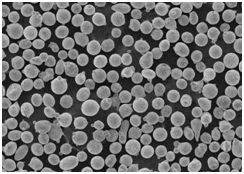
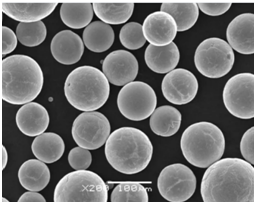
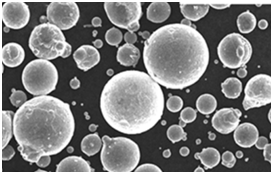
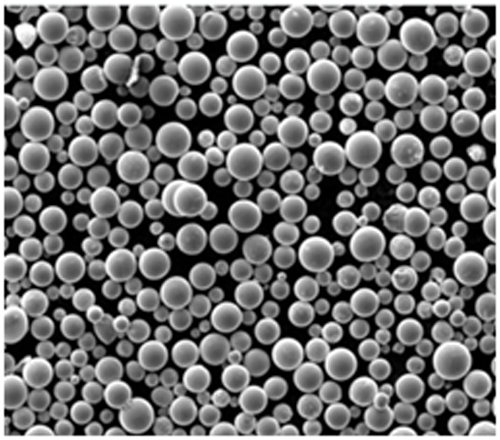

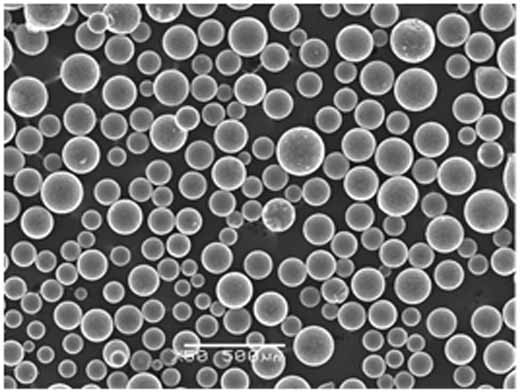
仕様、サイズ、等級、規格
耐火性金属粉末を扱う際には、その使用を規定する仕様、サイズ、等級、および規格を理解することが重要です。これらのパラメータにより、適切な材料が適切な用途に使用され、性能が一貫して信頼できることが保証されます。
| 耐火金属 | 粒子サイズ | グレード | スタンダード | 代表的なアプリケーション |
|---|---|---|---|---|
| タングステン | 0.5 – 10 µm | W1、W2、W3 | ASTM B777 | 高温部品、電気接点 |
| モリブデン | 1 – 15 µm | Mo1, Mo2 | ASTM B386 | 発熱体、溶射皮膜 |
| タンタル | 0.5 – 5 µm | Ta1, Ta2 | ASTM B521 | 医療用インプラント、化学処理装置 |
| ニオビウム | 1 – 20 µm | Nb1, Nb2 | ASTM B392 | 超伝導体、原子炉。 |
| レニウム | 0.1 – 5 µm | Re1、Re2 | ASTM F1760 | 触媒、高温熱電対。 |
| クロム | 1 – 50 µm | Cr1, Cr2 | ASTM B835 | 耐摩耗性コーティング、合金製造 |
| ハフニウム | 0.2 – 10 µm | Hf1, Hf2 | ASTM B776 | 原子炉、航空宇宙部品 |
| ジルコニウム | 1 – 25 µm | Zr1, Zr2 | ASTM B551 | 化学処理、原子炉 |
| イリジウム | 0.1 – 10 µm | Ir1、Ir2 | ASTM B785 | 電気接点、スパークプラグ。 |
| オスミウム | 0.5 – 5 µm | Os1、Os2 | カスタム仕様 | 耐摩耗性コーティング、合金製造 |
サプライヤーと価格詳細
適切なサプライヤーを見つける 耐火金属粉 パウダーの品質と一貫性が用途に大きな影響を与えるためです。価格は、純度、粒子径、サプライチェーンの力学などの要因によって変化します。
| サプライヤー | 提供される耐火物金属 | 平均価格(kgあたり) | 地域 | 専門分野 |
|---|---|---|---|---|
| H.C.スタルク | タングステン、モリブデン、タンタル、ニオブ | $500 – $2,000 | グローバル | 高純度パウダー、カスタマイズされた粒子径、安定した品質。 |
| 世界のタングステン; 粉末 | タングステン、レニウム、タンタル | $600 – $2,500 | 北米、ヨーロッパ | 航空宇宙、防衛、産業用途の高性能パウダー。 |
| エーティーアイ | タングステン、ハフニウム、ジルコニウム | $450 – $1,800 | 米国 | 重要産業への信頼性の高い供給、幅広い耐火物金属。 |
| プランゼー | モリブデン、タングステン、ニオブ | $400 – $1,500 | ヨーロッパ、アジア | 高温用途、カスタム合金製造に特化。 |
| レニウム合金 | レニウム、モリブデン-レニウム合金 | $2,000 – $10,000 | 米国 | ニッチ市場、カスタマイズ合金、高性能材料。 |
| 株洲超硬集団 | タングステン、クロム、タンタル | $300 – $1,200 | 中国 | 大規模生産、競争力のある価格、信頼できる品質。 |
| トレーバッハ・インダストリーAG | タングステン、タンタル、ニオブ | $500 – $2,000 | ヨーロッパ、北米 | 高純度材料、カスタムソリューション、強力な研究開発サポート。 |
| CBMM | ニオビウム | $800 – $3,000 | グローバル | ニオブのトップメーカーで、品質と技術革新に強いこだわりを持つ。 |
| JSCチェペツキー | ジルコニウム、ハフニウム | $600 – $2,200 | ロシア, ヨーロッパ | 原子力用材料、高純度粉末の専門商社。 |
| アメリカの要素 | すべての耐火金属 | $400 – $10,000 | グローバル | 幅広い製品、少量から大量まで、技術革新に重点を置く。 |
耐火金属粉末の利点と限界
耐火性金属粉末には素晴らしい利点がある一方で、一定の制限もあります。ここではその長所と短所を比較してみよう:
| メリット | 制限 |
|---|---|
| 高温耐性:耐火性金属は極端な温度に耐えることができるため、航空宇宙や原子炉のような高ストレス用途に最適です。 | コスト:これらの金属は、その希少性と抽出・加工の複雑さゆえに、しばしば高価である。 |
| 耐食性:タンタルやニオブのような金属は耐食性が高く、化学処理や医療用途に適している。 | 加工難易度:一部の耐火金属は、その硬さと脆さのために機械加工が難しい。 |
| 高密度:タングステンやオスミウムのような金属は密度が高いため、防衛や航空宇宙など、重量と運動エネルギー吸収を必要とする用途に適している。 | 空室状況:レニウムやイリジウムのようなある種の耐火性金属は希少であり、入手可能性が限られているため、サプライチェーン上の課題につながる可能性がある。 |
| 耐摩耗性:クロムのような耐火性金属は、切削工具や耐摩耗性コーティングに不可欠な優れた耐摩耗性を提供します。 | 酸化:一部の耐火性金属、特にモリブデンやタングステンは、コーティングで保護されているか不活性環境下にない限り、高温で酸化しやすい。 |
| 延性:タンタルのような金属は非常に延性があり、電子部品や医療機器に不可欠なクラックを発生させることなく複雑な形状に成形することができます。 | 毒性:耐火性金属およびその化合物の中には有毒なものがあり、慎重な取り扱いと廃棄が必要である。 |
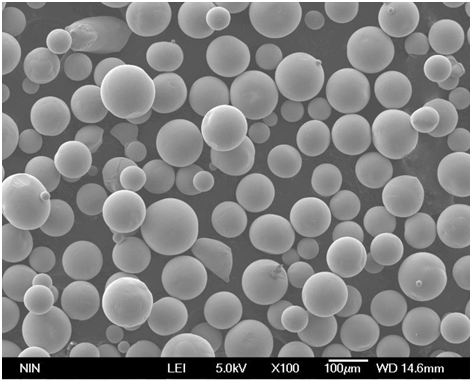
よくある質問
| 質問 | 回答 |
|---|---|
| 耐火性金属粉末とは? | 耐火性金属粉末は、高融点金属の微粒子で、極度の耐熱性と耐摩耗性を必要とする用途に使用される。 |
| なぜ耐火金属は高価なのか? | これらの金属は希少であることが多く、抽出や加工が困難であるため、コストが上昇する。 |
| 最も硬い耐火金属は? | タングステンはモース硬度7.5で、最も硬い耐火金属とされている。 |
| 耐火性金属は加工できますか? | しかし、硬くて脆いため機械加工が難しく、特殊な工具や技術を必要とするものもある。 |
| 耐火金属は安全に使用できますか? | 一般的にはそうだが、中には有毒なものや危険なものもあるので、適切な取り扱いと安全上の注意が必要だ。 |
| 最も融点の高い耐火金属は? | タングステンの融点は3,422℃と、金属の中で最も高い。 |
| 耐火性金属粉末はどのようにして作られるのか? | 通常、水素還元、炭素熱還元、電気分解などのプロセスを通じて製造される。 |
| 耐火金属粉末はどのような産業で使用されているのか? | 航空宇宙、防衛、エレクトロニクス、医療、原子力、化学処理などの産業では、これらの粉体が多用されている。 |
| 耐火性金属は腐食に耐えられるか? | そう、タンタルやニオブのような金属は、攻撃的な化学環境でも腐食に強い。 |
| 原子炉で耐火金属が重要なのはなぜですか? | 融点が高く、放射線障害に強いため、原子炉の部品として不可欠である。 |
